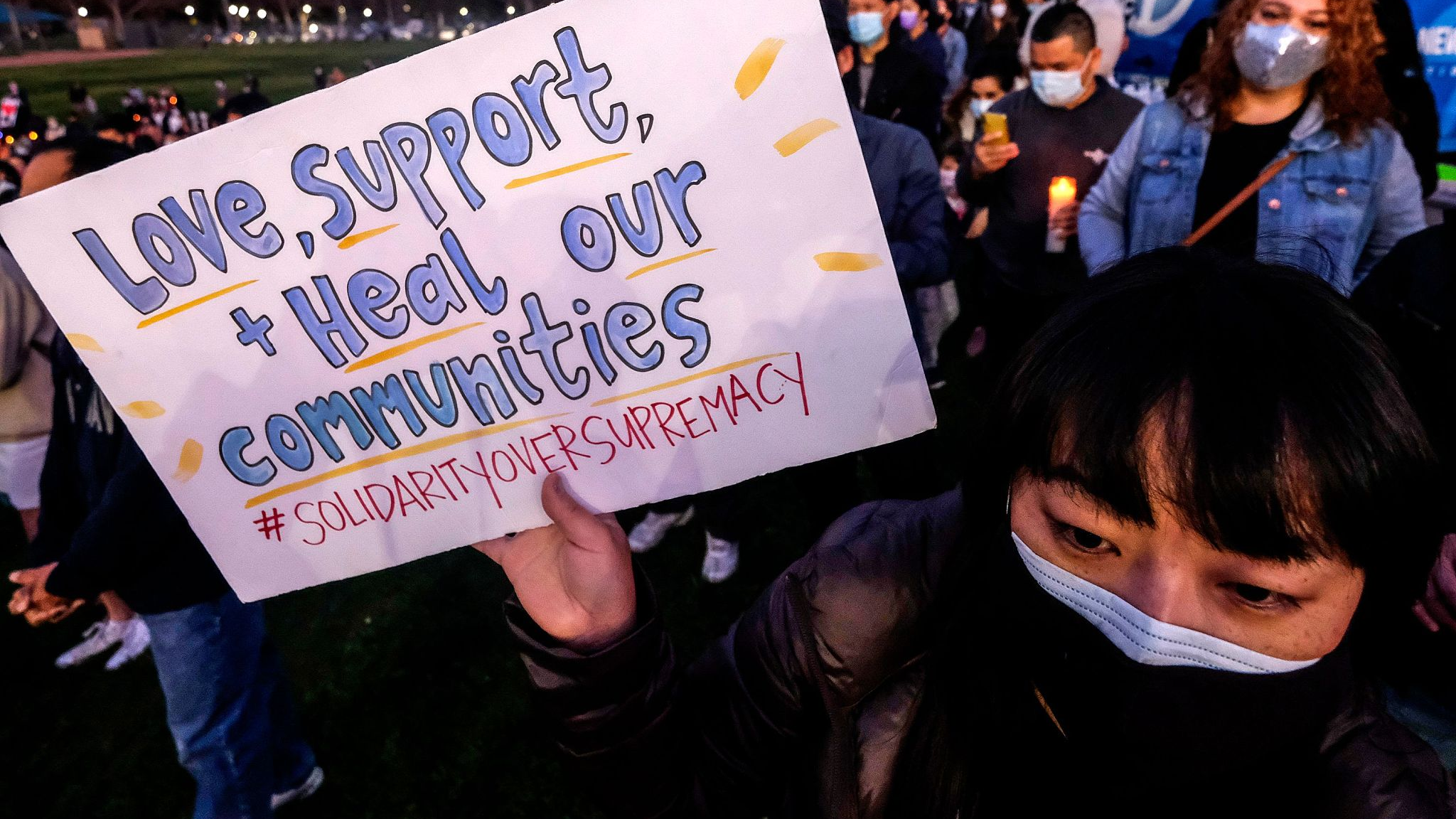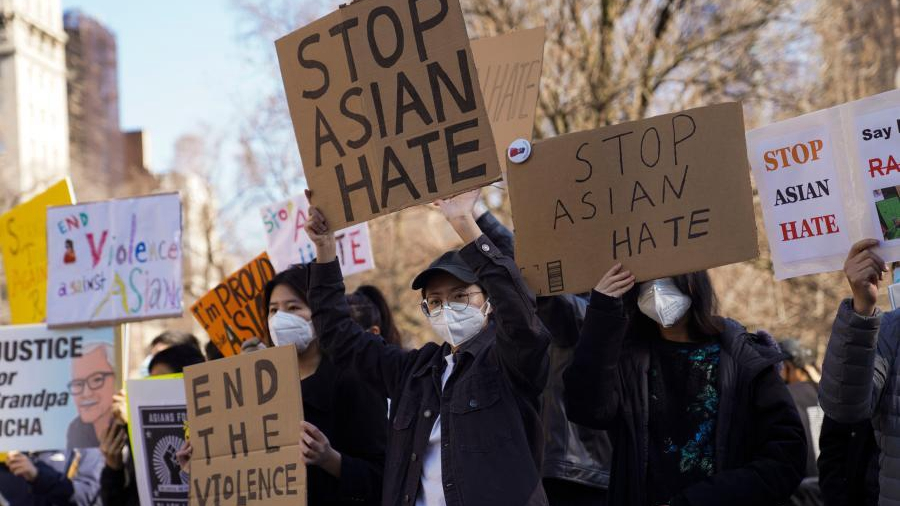Maitreya Bhakal
CGTN
Opinion 18:00, 27-Mar-2021

A woman holding an anti-hate sign takes part in a candlelight vigil in standing up against Asian American Pacific Islander (AAPI) hate and violence at Almansor Park in Alhambra, California, the United States, March 20, 2021. /CFP
Editor's note: Maitreya Bhakal is an Indian commentator who writes about China, India, the U.S. and global issues. The article reflects the author's opinions, and not necessarily the views of CGTN.
On March 22, 2021, 10 people died in a mass shooting in Boulder, a U.S. city once voted as the happiest in the country. Six days earlier, a white evangelical Christian shooter had killed 8 people in a terror attack in Atlanta, another U.S. city.
The news came as a shock to many but a surprise to exactly no one. The U.S. is a heavily crime-infested and drug-ridden nation, and gun violence is common. People frequently get killed on American streets – by gunmen both with and without a police badge. After a brief pause due to COVID-19 lockdowns (reluctantly enforced and barely followed), many were dreading the usual street violence and mass shootings that would signal the return of normalcy to America.
An epidemic of racism
What made the Atlanta attack unique was that six of the eight victims were women of Asian descent. It came when Asian Americans are being targeted across the nation in a soft riot catalyzed by U.S. propaganda – which falsely accuses China for the pandemic and thus for destroying Americans' lives. The U.S. blames China to divert attention from its own homicidal COVID-19 response. The New York Times called China the "incubator" of disease.
It worked. This gave birth to a new wave of anti-Asian violence, complementing America's existing history of Sinophobic racism. Barely a day goes by without at least one Asian American being assaulted.
The Atlanta gunman reportedly shouted "I want to kill all Asians" while committing the massacre. Seventy-three percent of U.S. respondents in a recent Pew Research survey had negative views of China, the highest in 15 years. In 16 of America's largest cities, overall hate crimes decreased by seven percent, but hate crimes targeting Asians increased by 150 percent.
One of us
U.S. policemen murder about 1,000 civilians a year – many of them from minority groups. Thus, they saw themselves in the Atlanta killer. He had more in common with the police than the victims.

People take part in a protest against Asian hate in New York, U.S., March 21, 2021. /Xinhua
Attempts to humanize the shooter and rationalize the shooting began almost immediately. The authorities' Pavlovian response was to try to grant the killer some moral character and legitimacy. The spokesperson for the local Sheriff's office acted as a spokesperson for the murderer too. The killer, he said, trying to explain his motives, "was pretty much fed up and, kind of, at the end of his rope. Yesterday was a really bad day for him and this is what he did."
Apparently, the killer wanted to "eliminate the temptation" of sex addiction by targeting spas and massage parlors. He denied racism as a motive, and the police took the killer for his word.
Many across the globe found a crime being chalked up to the criminal having "bad day" to be beneath contempt, even for America. The subsequent revelation that the spokesperson was a Sinophobe himself came as no surprise. He was after all a veteran, having spent 28 years in service (he has since been removed as a spokesperson on the case).
Killer propaganda
The U.S. media wasn't far behind. The New York Times, a newspaper that recently profiled a Nazi sympathizer in a way that many found a little too sympathetic, invited its readers on a tour of his Life and Times – something that they would probably never have done had the terrorist been Muslim or Black.
Readers were told the tale of the killer's childhood and how he was raised in Christian evangelical culture and how he suffered from sex addiction, which conflicted with his evangelical beliefs. It also told how many evangelicals "heard echoes of their own" in the terrorist's "struggle with sexual purity" and how he repeatedly sought treatment and was consumed with guilt and shame.
Others had their own agenda. Many outlets acknowledged the inter-sectional nature of the massacre, but only partially. They focused on racism and misogyny – while ignoring U.S. anti-Asian imperialism and their own Sinophobic COVID-19 coverage.
The murderer became a looking glass: everyone saw in him what they wanted to see. Some saw a misogynist. Some saw a white-supremacist and a racist. Some saw an evangelical sex addict.
And some just saw someone who was simply having a bad day.
The new normal – same as the old normal
America's recent surge of anti-Asian racism is unlikely to disappear soon. It will dovetail with the country's normal rampage of gun violence and mass murder. That same week witnessed seven mass shootings in seven days. Pandemic or no pandemic, it seems America is back to normal.






